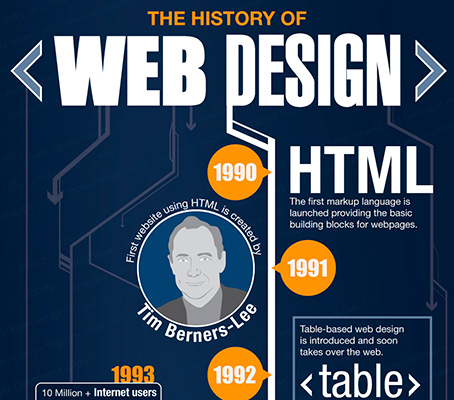Internet Site Design: A Trip Via Time.From Simple Beginnings To Modern Wonders, Site Style Has Undergone A Significant Change For Many Years
Internet Site Design: A Trip Via Time.From Simple Beginnings To Modern Wonders, Site Style Has Undergone A Significant Change For Many Years
Blog Article
Written By-Dalrymple Cantu
In the past, web sites were basic and concentrated on details. Navigation was direct, and design was for desktop computers. Now, customer experience is essential. Information guides layouts for easy navigating. Receptive designs suit different gadgets. Today, dark mode lowers pressure, and minimal food selections enhance navigating. Interactive attributes engage users, and bold visuals stick out. AI integration boosts interaction. See exactly how design has actually progressed to improve your on the internet trip.
Early Days of Web Design
In the early days of website design, simplicity reigned supreme. Internet sites were fundamental, with limited shades, font styles, and layouts. The emphasis got on supplying information instead of fancy visuals. Users accessed the net with sluggish dial-up links, so rate and capability were key.
https://www.digitaljournal.com/pr/experts-weigh-in-on-the-trends-shaping-the-future-of-digital-marketing were straightforward, typically located on top or side of the web page. Internet sites were designed for computer, as mobile surfing had not been yet prevalent. Web content was king, and developers prioritized simple readability over complicated design elements.
HTML was the main coding language used, and designers had to function within its restraints. Computer animations and interactive functions were marginal contrasted to today's requirements. Sites were fixed, with little vibrant content or personalized user experiences.
Rise of User-Focused Style
With the evolution of internet site layout, a change in the direction of user-focused design principles has actually become increasingly noticeable. Today, producing sites that focus on customer experience is crucial for engaging site visitors and accomplishing organization goals. User-focused design includes understanding the needs, preferences, and actions of your target audience to tailor the internet site's format, content, and features as necessary.
Designers now carry out extensive research, such as user surveys and usability screening, to gather insights and comments directly from individuals. This data-driven method aids in creating user-friendly navigation, clear calls-to-action, and aesthetically appealing interfaces that reverberate with site visitors. By positioning the individual at the center of the design procedure, sites can deliver a more tailored and pleasurable experience.
Responsive style has likewise emerged as a vital element of user-focused style, ensuring that web sites are maximized for different gadgets and display sizes. This adaptability improves accessibility and use, dealing with the varied means users connect with web sites today. Basically, the surge of user-focused style symbolizes a shift towards creating digital experiences that prioritize the demands and assumptions of completion individual.
Modern Trends in Web Design
Explore the most up to date patterns shaping website design today. One noticeable fad is dark mode layout, using a sleek and modern appearance while minimizing eye strain in low-light atmospheres. Another vital pattern is minimal navigation, simplifying food selections and boosting user experience by focusing on essential elements. Including micro-interactions, such as computer animated switches or scrolling results, can create an extra appealing and interactive web site. Receptive layout continues to be critical, making certain smooth user experiences across different tools. Additionally, using bold typography and unbalanced formats can add aesthetic passion and draw attention to particular content.
Integrating AI modern technology, like chatbots for consumer support or personalized recommendations, improves customer interaction and streamlines procedures. Availability has additionally come to be a significant trend, with developers prioritizing inclusive design methods to accommodate diverse user requirements. Welcoming best site for seo by maximizing web site efficiency for rate and effectiveness is an additional arising fad in website design. Working together with user comments and information analytics to iterate and improve layout constantly is important for remaining relevant in the ever-evolving electronic landscape. By accepting these modern-day fads, you can develop a visually attractive, straightforward internet site that resonates with your audience.
Verdict
As you reflect on the evolution of web site layout from the early days to now, you can see exactly how user-focused style has come to be the driving pressure behind contemporary patterns.
Accept the trip of change and adaptation in web design, constantly keeping the user experience at the center.
Remain current with the most recent trends and modern technologies, and never quit progressing your strategy to develop aesthetically stunning and easy to use sites.
Progress, adjust, and create - the future of website design is in your hands.
